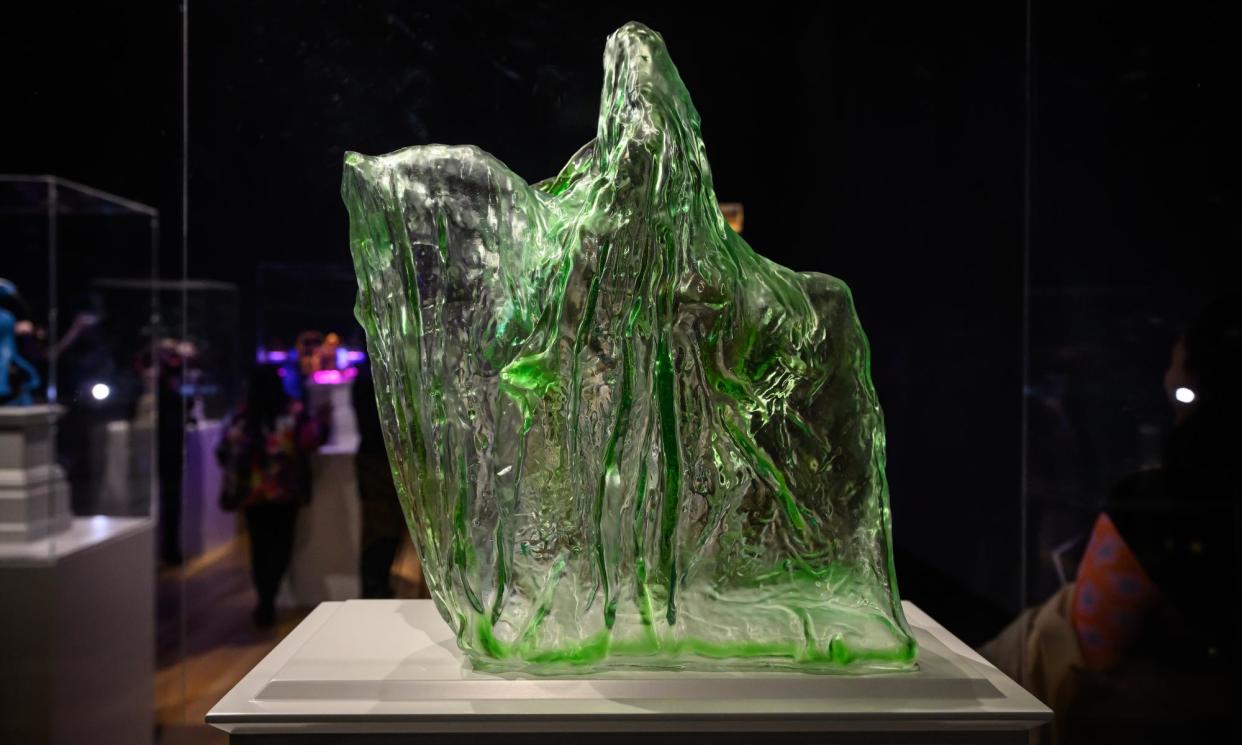‘Everywoman’ and horse sculptures chosen for display at London’s fourth plinth

A bronze sculpture paying homage to a woman of colour; and a hollow, lifesized person on a horse cast in a slime-green resin will be the next two artworks installed on Trafalgar Square’s fourth plinth.
The works by Tschabalala Self and Andra Ursuța were selected from a shortlist which included Veronica Ryan, Thomas J Price, Chila Kumari Singh Burman, Gabriel Chaile and Ruth Ewan.
Self’s Lady In Blue, which is to be installed in 2026, was inspired by a desire to bring a contemporary “everywoman” to Trafalgar Square. Made of bronze, the work will be patinated with lapis lazuli blue, a pigment that has been used since antiquity in north Africa, the Middle East and Europe, including by artists such as Titian and Vermeer.
The US artist Self, best known for her depictions of female figures using paint, fabric and discarded pieces of her previous works, said she was “honoured” that her sculpture had been selected.
“[It] will bring to Trafalgar Square a woman that many can relate to,” she added. “She is not an idol to venerate or a historic figurehead to commemorate. She is a woman striding forward into our collective future with ambition and purpose. She is a Londoner, who represents the city’s spirit.”
Self also thanked London “for so many milestones” in her practice. “I had my first institutional show here, and later the first presentation of my first major painting series. The city has truly supported my artistic development and I am beyond thrilled to give back to its visual landscape with this public commission.”
Ursuța’s Untitled, which is to be installed in 2028, is intended to embody the multiple histories of public sculpture and commemorative ritual at a time when there is increasing debate about the use of public space. The equestrian statue is said to “hover at the edge of visibility … Is it yet to be uncovered? Or is it an already cancelled public monument – a ghost of history, a parody of itself?”
The Romanian artist’s work explores the nihilistic portrayal of the human condition and confronts darker issues of contemporary society with provocation and humour.
She said she was “touched and humbled” by the commission. “My work deals with history; history makes sense of us as we try to make sense of it. Trafalgar Square is a place where multiple histories face one another in an open-ended standoff. It will never be finished. This is such a crucial, and beautiful, accident.”
The winning art works were independently chosen by the Fourth Plinth Commissioning Group, which is chaired by Ekow Eshun. The public were invited to have their say, which informed the final decision.
Self and Ursuţa will follow Samson Kambalu’s Antelope, a sculpture of the preacher John Chilembwe, who was killed in an anti-colonialist uprising in what was then Nyasaland, now Malawi, and Teresa Margolles’s Improntas (Imprints), which will be the next sculpture on the plinth and will be installed this September.
Margolles’s work, made up of plaster casts of the faces of hundreds of trans people, will be arranged around the plinth in the form of a tzompantli, a skull rack from Mesoamerican civilisations. The work will begin to naturally erode while on the Fourth Plinth, with the detail of the faces slowly fading as the plaster is exposed to the weather. It is a tribute to a transgender woman called Karla who was murdered in Mexico in 2016.
The first commission for the plinth, Ecce Homo by Mark Wallinger, was unveiled in 1999, and 14 works have been displayed on the site to date.
Justine Simons, the deputy mayor for culture and creative Industries, said that Self and Ursuţa “were chosen from a fantastic shortlist that has inspired debate among Londoners. The sculpture prize has entertained and brought out the art critic in everybody for 25 years, and I have no doubt these two very different pieces will continue that fine tradition.”


